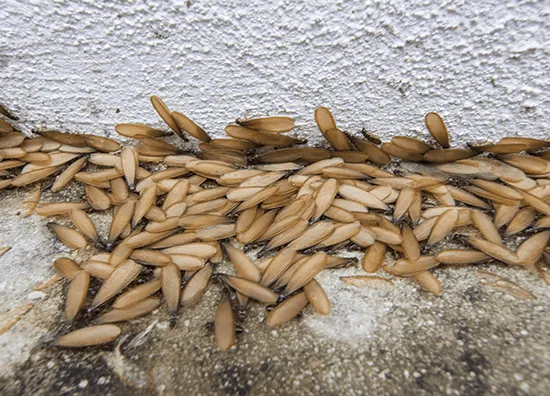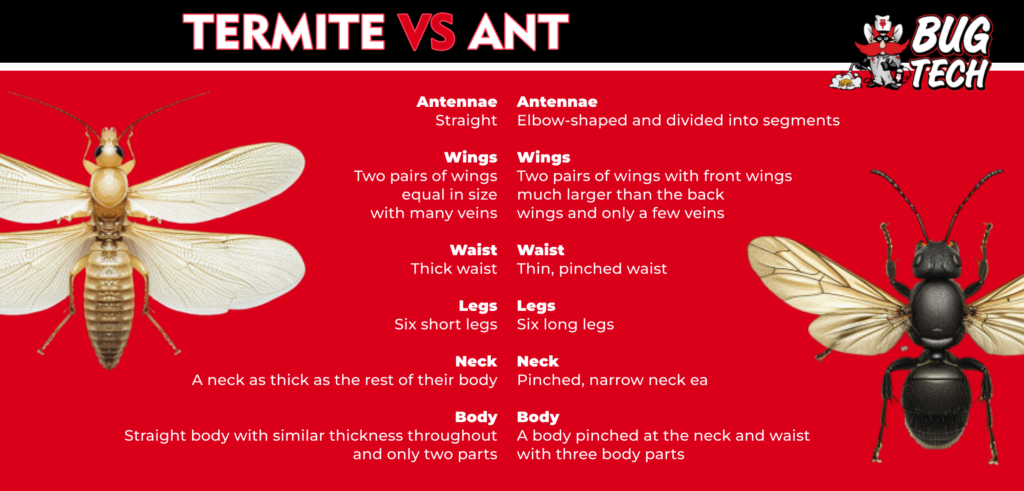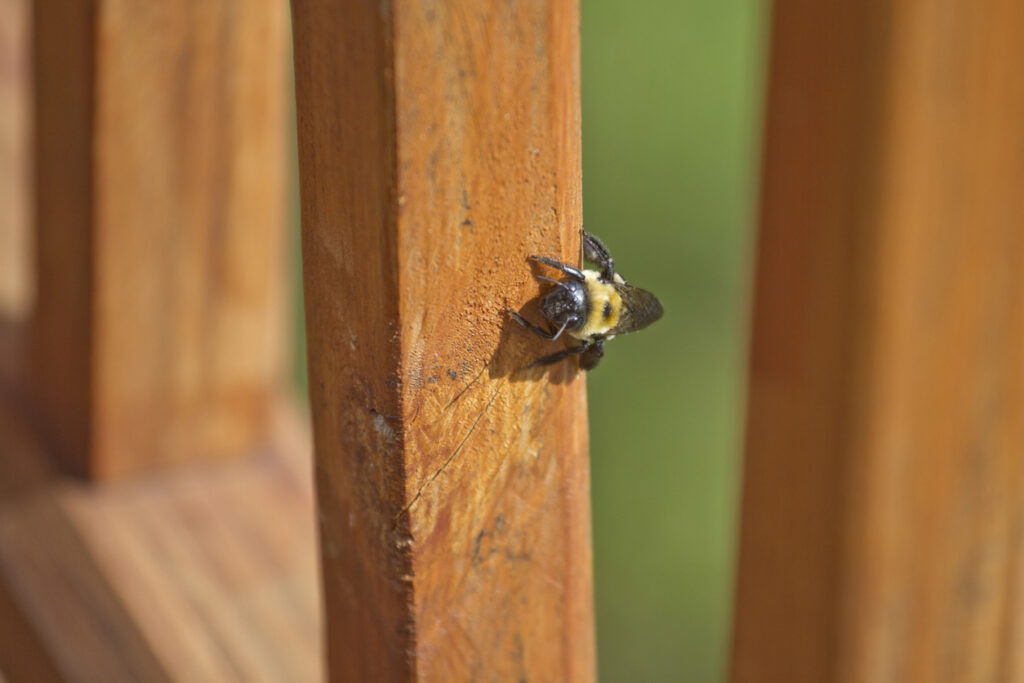Termite Twins: Learn More About Bugs Often Mistaken for Termites

Your home is your safe space. The place that you love to keep clean, comforting, and most importantly, bug-free. Not free from just any bug: termites, the infamous destroyers of your home's very foundation. Before panic sets in when you see one of these invaders, it's important to remember one crucial detail: not all bugs that look like termites are actually termites. Misidentification is a common issue, particularly due to the resemblance shared among many species of insects such as powderpost beetles, and carpenter ants.
Our team at Bug Tech is no stranger to the confusion that these similar-looking bugs can cause. We have built our reputation around being experts in termite treatment, control, and inspection in and around Lubbock, TX. With our extensive knowledge and experience in the field, we help customers correctly identify the pests they're dealing with - whether it's the destructive termite they fear or just a look-alike.
Why does this matter? Because treating a powderpost beetle infestation like you would termites or treating a termite infestation as though it's simply a matter of a few harmless beetles, can lead to ineffective pest management strategies and persistent problems. Correct identification is the optimal starting point for effective treatment and control.
Get to Know Termites: Key Features and Behaviors
Before we delve into the world of look-alikes that are often mistaken as termites, let's get to know the actual termites better.
These social insects, distinguished by their slender bodies that are usually less than an inch long, play a significant part in the food chain, aiding in the decomposition process of dead plants and trees when they exist in their natural habitats. The real issue arises when they decide to find a food source in the structures we live and work in, causing potential structural damage.
Termites can be identified by several key features - straight antennae and wings being two of them. Termites have two pairs of wings- rear wings, and front wings that are roughly equal in size. The color of these insects can vary from cream-colored to dark brown or black, depending on the species and their role in their colony.
To learn more about winged termites, listen to our latest episode of the Does It Bite? Podcast!
Speaking of species, in Lubbock, two of the most common species of termites are the drywood termites and the subterranean termites. Drywood termites, as the name suggests, are typically attracted to dry wood, like that found in attic spaces, while subterranean termites build their large colonies in soil and have a unique ability to construct mud tubes to travel to wood above ground level.
Another important point to note in understanding termites is their life cycle and caste system. A colony is made up of worker termites, soldier termites, and reproductive termites or swarmers. The workers are responsible for the wood damage as they feed and create tunnels through it. Soldier termites have the job of protecting the colony, and reproductive termites, or swarmers, are those that leave the colony during the mating season (generally during warmer months), in large numbers, in search of creating new colonies.
Now that we've established a better understanding of what termites look like and how they behave, we can begin to examine the species that can often be mistaken for these wood-craving creatures.
Common Bugs Mistaken for Termites: Differentiation Between Termites and Similar Bugs
Now that we have a thorough understanding of termites, let’s turn our attention to the look-alikes often mistaken for them. By taking a closer look and understanding the key differences, correct identification will be the first step in dealing with your pest issues.
Powderpost Beetle
First on the list is the powderpost beetle. These bugs, also residing within the United States, share a similar penchant for wooden structures, like termites, making it easy to confuse the two. Powderpost beetles are typically smaller than termites and come with a distinct narrow, flattened body. Additionally, the distinctive small holes in wood left by powderpost beetles can aid identification.
Carpenter Ants

Unlike termites who eat wood, carpenter ants carve out their homes in it, which results in equally destructive consequences for our wooden structures. However, there are several noticeable differences between termites and this ant species. Carpenter ants typically have a narrow or pinched waist and bent antennae, and their front wings are longer than their hind wings - differing from a termite's equal wing size. Also, carpenter ants can often be seen expelling small piles of wood shavings, which is not a behavior you would see from termites.
Carpenter Bees

Not to be confused with bumblebees, carpenter bees are another insect species often mistaken for termites. Especially the female carpenter bees, with their sleek black bodies and habit of burrowing in wood, can often be mistaken for winged termites. However, unlike termites, which eat and tunnel through the wood, carpenter bees bore large, round holes into the wood where they lay their eggs.
Acrobat Ants
Finally, there is the acrobat ant. As with carpenter ants, their narrow or pinched waist bent antennae, and the relative sizes of their front and hind wings set them apart from termites. Furthermore, these ants get their name from their tendency to raise their abdomen over their head and thorax when they are disturbed, a behavior you would not see with termites.
Inspection and Identification: How to Accurately Identify Termites
Recognizing the tiniest traces of a termite's presence is the first step to mitigating a potential infestation. While expertise and a keen eye are always preferred, there are several signs that you can learn to identify for quick detection of termite infestations.
Mud tubes are one such indicator of a subterranean termite infestation. These pencil-thick tunnels provide shelter for these types of termites and maintain the humidity and temperature. Seeing these attached to your walls is not a welcome sight and should call for immediate pest control.
Another sign to look for is the appearance of fecal pellets. Termites, similar to other pests, leave a trail of droppings known as frass. Though tiny, these wood-colored droppings can be a clear indication of an invasion.
Another telling sign is wood damage. When termites feed on wood, they create tunnels within it. A piece of wood that has significant damage from termites can appear rotten or darkened and will sound hollow when tapped. This type of wood damage often signifies a long-term infestation.
At Bug Tech, these signs are just a few of the numerous potential indicators we use to accurately identify a termite infestation during our inspection. Whether the termites are going about their activity within the cozy confines of your attic or quietly creating havoc beneath the foundation of your property, through training and experience, our team knows exactly where to look and what to look for.
The Importance of Professional Pest Control
More than just a case of mistaken identity, accurately identifying the bug in question is your first step to effective treatment. Just like it's ineffective to treat a case of the flu as pneumonia, treating a powderpost beetle infestation like you would termites, or vice versa, is counterproductive, often leading to persistent problems and potential property damage.
That’s where we, the Bug Tech team, come in. With our tailor-made, targeted termite treatment and control measures, we help manage and eliminate these pests, ensuring they don’t return. Equipped with skills honed over the years and the commitment to deliver exceptional customer service, the Bug Tech team ensures your termite concerns are addressed promptly and effectively. Our annual inspection service is designed to keep a lookout for new termite activity throughout the year, helping prevent future infestations.
So yes, while bugs that look like termites are still a cause for concern, the good news is, you're not alone in this battle. With Bug Tech by your side, you can trust that we are only a call away from making your property safe, secure, and termite-free.
Remember, when it comes to protecting your home from potential structural damage and steering it clear from the path of destruction, professional pest control isn't just an option but the best line of defense.
